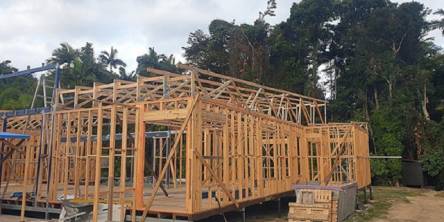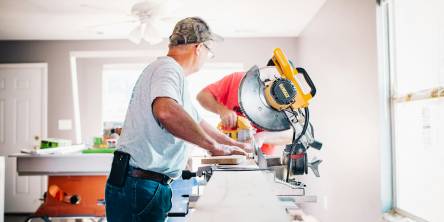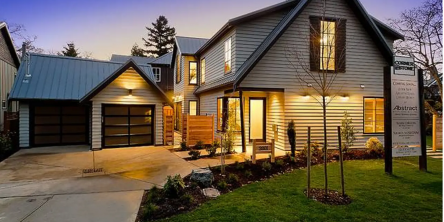The Hidden Benefits of Insulation: Comfort, Savings, and Moisture Protection

When people think about insulation, they often associate it with keeping homes warm in the winter and cool in the summer. While temperature regulation is one of its primary functions, insulation offers a range of additional benefits that many homeowners overlook. From reducing energy costs to preventing moisture-related damage, insulation plays a crucial role in maintaining a comfortable, cost-efficient, and healthy home environment.
This article explores the hidden benefits of insulation, including enhanced comfort, financial savings, and moisture protection. If you're considering an upgrade, understanding these advantages will help you make an informed decision about improving your home's energy efficiency.
Enhanced Comfort: A Stable Indoor Environment
A well-insulated home maintains a consistent indoor temperature, eliminating cold drafts in the winter and excessive heat in the summer. Without adequate insulation, external temperatures can easily seep in, making it difficult to maintain comfort without overworking heating and cooling systems.
Beyond temperature control, insulation also plays a role in noise reduction. High-quality insulation materials, such as spray foam and fiberglass, help absorb sound vibrations, creating a quieter living environment. This is particularly beneficial for homes in busy neighborhoods or near high-traffic areas, where external noise can disrupt daily life.
Additionally, insulation enhances indoor air quality by preventing air leaks that allow pollutants, allergens, and dust to enter the home. A stable and comfortable environment leads to better health and overall well-being for residents.
Significant Cost Savings on Energy Bills
One of the most tangible benefits of insulation is its ability to reduce energy consumption, leading to substantial cost savings. Properly insulated homes require less energy for heating and cooling because they retain conditioned air more effectively. This means homeowners can rely less on HVAC systems, reducing utility bills.
According to the U.S. Department of Energy, properly insulating key areas of a home, such as walls, attics, and floors, can save homeowners up to 15% on heating and cooling costs. Over time, these savings can offset the initial investment in insulation installation.
For those looking to further optimize energy efficiency, combining insulation with air sealing measures can enhance performance even more. Addressing leaks around windows, doors, and ductwork ensures that the conditioned air stays inside, reducing strain on heating and cooling systems.
By upgrading or reinforcing residential insulation, homeowners can make a cost-effective investment that pays off in the form of lower energy expenses year after year.
Moisture Protection: Preventing Damage and Health Issues
Moisture is a hidden enemy of many homes, often leading to structural damage, mold growth, and indoor air quality issues. High humidity levels or condensation buildup can create the perfect conditions for mold and mildew to thrive, which can pose health risks for residents, especially those with respiratory conditions.
Insulation helps regulate moisture levels by preventing warm and cold air from meeting inside walls, reducing the risk of condensation. Certain types of insulation, such as closed-cell spray foam, also act as an effective moisture barrier, keeping walls, roofs, and basements dry.
Additionally, proper insulation prevents wood rot and deterioration caused by prolonged exposure to damp conditions. This is particularly important for homes in humid climates or areas prone to heavy rainfall, where moisture infiltration can lead to costly repairs.
When homeowners invest in high-quality residential insulation, they are not only improving energy efficiency but also protecting their home’s structural integrity and their family's health.
Sustainability and Environmental Benefits
In addition to personal cost savings, insulation also benefits the environment by reducing overall energy consumption. Homes with proper insulation require less power to maintain comfortable temperatures, which, in turn, reduces the demand for fossil fuel-based energy sources.
For homeowners interested in eco-friendly solutions, there are several sustainable insulation options available, such as cellulose insulation made from recycled paper or wool insulation derived from natural sheep wool. These materials provide effective thermal resistance while minimizing environmental impact.
By improving residential insulation, homeowners contribute to global energy conservation efforts, reducing their carbon footprint and promoting a greener future.
Choosing the Right Insulation for Your Home
With various insulation materials available, selecting the right type for your home depends on several factors, including climate, budget, and installation requirements. Here are some common insulation options:
● Fiberglass Insulation – Affordable and widely used, ideal for walls, attics, and crawl spaces.
● Spray Foam Insulation – Provides excellent air sealing and moisture resistance, making it suitable for basements and exterior walls.
● Cellulose Insulation – A sustainable option made from recycled materials, offering great thermal performance.
● Rigid Foam Insulation – Highly effective for exterior applications and preventing heat transfer in foundations.
Professional installation is recommended for maximizing the effectiveness of insulation, though some homeowners may opt for DIY-friendly materials like fiberglass batts. Consulting an expert can help determine the best insulation type based on your home’s specific needs.
Conclusion
While insulation is often associated with temperature control, its benefits extend far beyond just keeping your home warm in winter and cool in summer. It enhances comfort, reduces energy costs, protects against moisture damage, and even contributes to a more sustainable environment.
Investing in quality insulation is a smart long-term decision that pays off through lower utility bills, improved indoor air quality, and a structurally sound home. If you're looking to upgrade your insulation, now is the perfect time to assess your home's needs and take the necessary steps to enhance its efficiency and protection.
Similar Articles
AS 1684 is vital for ensuring the safety, stability, and compliance of timber-framed buildings in Australia. However, many professionals make mistakes when applying this standard, which can compromise the quality and integrity of a project.
Boost home energy efficiency with top renovation tips—insulation, smart appliances, HVAC upgrades & more. Save money & reduce environmental impact!
Have you ever looked up at your roof and wondered if it’s still in tip-top shape? Are you asking yourself whether those small cracks or worn-out tiles could lead to bigger problems down the line? If so, you’ve come to the right place.
Smart home remodel tips: splurge on countertops & flooring, save on decor & lighting. Balance budget & luxury for a stylish, functional space!
Discover the rising trend of roller shades in modern homes! Essential window coverings for a sleek, stylish look. Transform your space now!
Transform your outdoor space with stone veneer! Discover benefits, installation tips, maintenance, and creative ideas for enhancing curb appeal and durability.
Marble is a luxury and high-end material that imparts a sense of timelessness to any living space. From a white Carrara marble table to an intricately veined dark marble surface, its elegance and sophistication make it an incredible focal point in your living space.
What do you do with old quilt covers after you’ve used and abused them for several years? Well, for starters, you’ve got to shop for some brand-new king size quilt covers, and then you need to roll your sleeves up for some fun DIY projects
Custom home construction is continually developing in response to homeowners' changing wants and aspirations. As we look ahead, it is evident that certain themes will dominate the new house construction sector in 2025.









